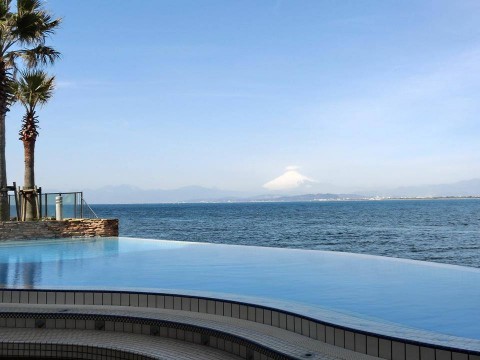Why Do Japanese People Call Mt. Fuji, Mr. Fuji?
Learn a bit about the Lingo and get an Inside View!
If you wondered why Japanese people refer to Mt. Fuji as Mr. Fuji, you are not alone.
When I first came to Japan, and actually until about two years ago, well okay, actually it still happens a lot, I was confused and continue to get confused by place names.
In Japanese, Mt. Fuji is called Fujisan. Also, as you know, the honorific for addressing people in Japan is to add a “san” to their name. For this reason, I really thought that Japanese people truly respected Mt. Fuji because they were referring to Mt. Fuji as Fuji “san” or Mr. Fuji. I realized later that the Chinese character for Mountain is “山” which is pronounced “San”. So keep in mind that you add san as an honorific to names as well as use san for mountain. Oh, and by the way, “san” also means “three”. Lots of “san” in the Land of the Rising “sun”!
The other thing I realized a few days ago was that since the Edo Castle had moats that are “Hori” in Japanese, there are two central roads in Tokyo called Uchibori-dori and Sotobori-dori. “Uchi” means “inside” moat and “Soto” means “outside” moat. I understand that the moats around the Edo castle of old were land-filled and are now main thoroughfares running through Tokyo. You will hear directions that include “Sotobori dori” and “Uchibori dori” and now you will know that these roads used to be moats to protect the Edo Castle.
Here is another interesting place name for you. How about Shiodome? Hmmm. Guess what that means? “Shio” means “Tide” and “Dome” means to “stop” or “hold back”. So the area around Shinbashi station that is called Shiodome is actually a low-lying area that used to be underwater. It would stop the tides coming into the Shinbashi area.
How about places like Yamanaka-ko, Kawaguchi-ko, or Biwa-ko? Yes, you guessed it! “Ko” means lake. But ah-hah! That is different from names like Hanako, Hoshiko or Yoko. The “Ko” in these names mean “Child”. Pretty hippie don’t you think? Hana-ko can mean “Flower Child” or Hoshiko can mean “Star Child” or Yoko can mean “Sun-Child”. Nice, beautiful, natural and earthy names for a country seeped in a Shinto respect for nature and spirits in every living thing.
Have you heard the word “Ohayou”? This is translated as “Good Morning” but actually means “Its early” with the honorific “O” at the start of the word. Just like good night which is “Oyasuminasai” which literally means “Rest Now” with an honorific “O” to start the phrase. “Oyasumi” is also the word for holiday or time off and literally means “rest” with the honorific “O” at the top. How about “Oseiji”, hmmm, that's and interesting one. It means “empty compliment” and you would use it when someone is telling you how great you are and you want to play it down. “Sonna Oseiji ha iranai yo!” is kind of like saying “Hey, you don't need to butter me up so much!”. O yeah and don't forget the word “Oishii!” this means “Delicious” and is the best compliment you can give your host during and after a nice meal. There is no honorific used here because the word in itself is kind and expresses your heartfelt thanks.
Learning a few words in Japanese and being able to recognize honorifics gives you a glimpse into the history of the area, geography and also how Japanese view that expression. A culture is expressed best in its own words so when you are in Japan try to give the lingo a try.
Ganbatte Kudasai! (Please do your best!)

Former Deep Japan Writer













